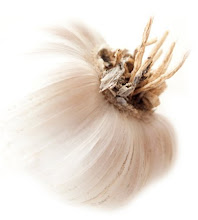 The Mediterranean sea water are not quiet. Its been a difficult week and a reminder to the complex reality of the region. Enough to remove any shred of optimism. This is when food becomes a form of escapism and perhaps an allegory to how things can be done with a difference.
The Mediterranean sea water are not quiet. Its been a difficult week and a reminder to the complex reality of the region. Enough to remove any shred of optimism. This is when food becomes a form of escapism and perhaps an allegory to how things can be done with a difference.Not a big fan of brownies, me. Nothing personal. Don’t get me wrong, if they’re there, I’ll have one, perhaps another. It is also true that sometimes a chocolate hit is all that is needed, however I cannot say that thinking of brownies keeps me up at night, as opposed to pastry that is.
Cheesecakes are a different story. They’re tricky to get right, and less forgiving to bake. Spoilt, one might even say. They’re rich, lactic and costly to make, ie high maintenance. Being a lover of all things efficient to the max, cheesecake has not managed to fall into this category.
So far, not so good.
I was pleased to find that 2 minuses (-) (-) equal a major plus (+) in the kitchen. The marriage of chocolate + cheese resulted in wonderful cheesecake brownies. Once they both agreed to leave their egos behind to create a hybrid whole bigger then the sum of its parts, that is.
The brownie base is a rich dark bitter chocolate with chunky pieces of roasted walnuts. The thin cheesecake layer does a balancing act with its creamy tang.
A finishing layer of chocolate fudge rounds it all up. Like the coating of a pill, it goes down smoothly and swiftly.
Now all that’s left to figure is, if cheesecake and brownies can find a way to get along, surely so can people?

Cheesecake Brownies
Recipe adapted from David Leibowitz
1 Brownie pan
The brownies:
85g unsalted butter, cut into pieces
115g dark chocolate (70%cocoa), coarsely chopped
2/3 cup sugar
2 large eggs, at room temperature
½ cup flour
1 Tbs unsweetened cocoa powder
1/8 Tsp salt
1 Tsp vanilla extract
½ cup walnuts, lightly roasted
The cheesecake:
200g cream cheese, at room temperature
1 large egg yolk
5 Tbs sugar
1/8 Tsp vanilla extract
The chocolate fudge coating:
100g dark chocolate (70%cocoa), coarsely chopped
1 Tbs Golden syrup
25g unsalted butter
Line the pan with foil, making sure it goes up all four sides and grease lightly.
Preheat oven to 180C°.
Make the brownies batter:
In a medium saucepan, melt the butter and chocolate over low heat, stirring until smooth. Remove from heat and beat in the 2/3 cup sugar, then the eggs.
Mix in the flour, cocoa powder and salt, then the vanilla and the roasted walnuts. Spread evenly in the prepared pan.
Make the cheesecake batter:
In a separate bowl, beat together the cream cheese, the yolk, 5 tablespoons of sugar, and vanilla until smooth.
Distribute the cream cheese mixture in eight dollops across the top of the brownie mixture, then take a dull knife or spatula and smooth the cream cheese mixture over the chocolate batter.
Bake for 20-25 minutes, or until the batter in the centre of the pan feels just set.
Let cool, then make the chocolate fudge coating.
Melt the chocolate in a bain marie (aka double boiler).
Meanwhile, heat the water to boiling in the small, heavy saucepan. When the chocolate has melted remove from the heat and add the butter and golden syrup.
Stir until smooth and allow the mixture to cool, stirring from time to time.
Spread the fudge over the cheesecake and allow it to cool.
Lift out the foil and peel it away.
Cut the brownies into squares and, unless serving right away, keep in an airtight container in the fridge.
Note: to create the pattern I used cocoa powder and a stencil bought from an arts & crafts shop.






















